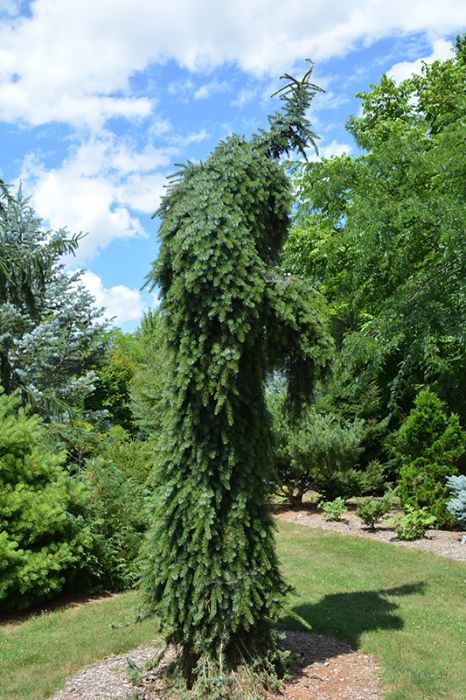Picea, Serbian Spruce 'Bruns Weeping'



Out of stock
- Sun Preference
- Full-Sun
Description
A very narrow selection with an upright leader and short, strongly pendulous branches. Showy, two-toned needles are dark green with a silvery underside.
Minnesota's Largest Selection of Shrubs
Elevate your landscaping with Gertens' unmatched variety of shrubs! Selecting the right shrubs for your backyard can enhance its beauty and functionality. Consider factors like sunlight, soil type, and mature size when choosing shrubs. For sunny areas, flowering shrubs like roses or hydrangeas can add color and charm. In shady spots, opt for shrubs like azaleas or hostas. Evergreen shrubs provide year-round interest and privacy, while deciduous shrubs offer seasonal color changes. At Gertens, we offer a wide selection of shrubs to suit every backyard need.
Details
Bruns Weeping Spruce | Picea omorika 'Pendula Bruns'
Height: 25 feet
Spread: 12 feet
Sunlight: Full Sun
Hardiness Zone: 4a
Description:
A very unique and highly artistic evergreen tree for the landscape with strongly weeping and slightly twisted branches along a single central trunk, resulting in a very tall, spire-like form; best used as a solitary accent in the overall composition
Ornamental Features
Bruns Weeping Spruce is primarily valued in the landscape for its highly ornamental weeping form. It has attractive dark green foliage with silver undersides which emerges light green in spring. The needles are highly ornamental and remain dark green throughout the winter. The smooth brick red bark adds an interesting dimension to the landscape.
Landscape Attributes
Bruns Weeping Spruce is an evergreen tree with a strong central leader and a rounded form and gracefully weeping branches. Its relatively fine texture sets it apart from other landscape plants with less refined foliage.
This is a high maintenance tree that will require regular care and upkeep. When pruning is necessary, it is recommended to only trim back the new growth of the current season, other than to remove any dieback. It has no significant negative characteristics.
Bruns Weeping Spruce is recommended for the following landscape applications;
- Accent
- Vertical Accent
Planting & Growing
Bruns Weeping Spruce will grow to be about 25 feet tall at maturity, with a spread of 12 feet. It has a low canopy, and should not be planted underneath power lines. It grows at a slow rate, and under ideal conditions can be expected to live for 80 years or more.
This tree should only be grown in full sunlight. It does best in average to evenly moist conditions, but will not tolerate standing water. It is not particular as to soil type or pH. It is quite intolerant of urban pollution, therefore inner city or urban streetside plantings are best avoided, and will benefit from being planted in a relatively sheltered location. This is a selected variety of a species not originally from North America.
More Information
| Gerten Grown Plants | Gerten Grown Plants |
|---|---|
| Available for Pre-Order | No |
| Sun Preference | Full-Sun |
| Mature Height (Range) | 15 - 25 feet |
| USDA Hardiness Zone | 4, 5, 6, 7, 8 |
| Common Family Name | Spruce |


